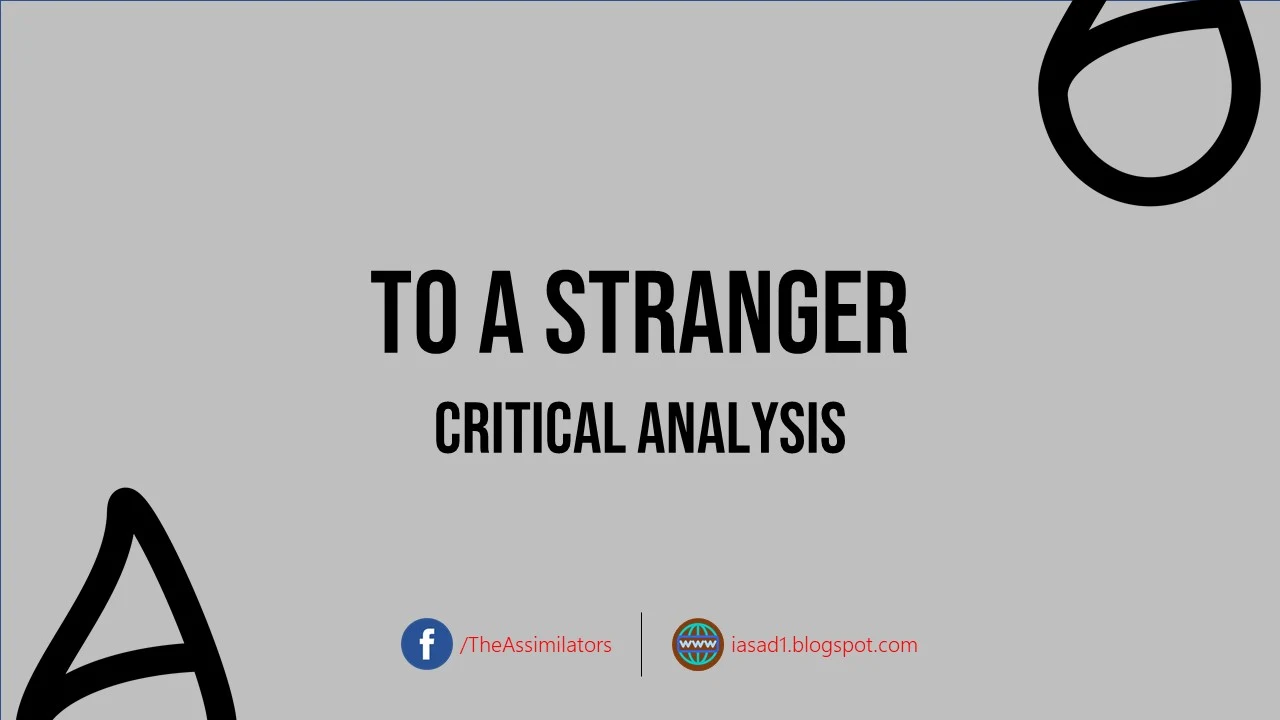Background Information
To a Stranger is a short poem written by Walter Whitman. The poem appears in the 1867 edition of the Leaves of Grass. In this poem, the poet talks to a stranger of the unspecified gender. He thinks that he has already met the stranger somewhere before the current phase of his life. To a Stranger covers the subject of universal equality among humanity (which we'll talk about it in the Themes section of this poem. )
Situation
The poem begins when the speaker calls up the stranger who is "longingly" looking upon him. The poet states that they might have spent some good time in their previous life. He also gives the idea that,
You grew up with me, were a boy with me or a girl with me,
When the poet is alone "in bed" in night, he thinks of the stranger.
Development of Themes
The initial theme that develops in this poem is the universal equality in being or calling to a stranger. It is scientifically proven that we are all related to one another, not in a human relationship but as all living beings on the planet earth. The poet has not specified who is the stranger. Maybe it is a boy, or a girl or God (according to another analysis). No matter what is the identity of the stranger, one thing is certain that in the past life,
I ate with you and slept with you, your body has become not yours only nor left my body mine only,
You give me the pleasure of your eyes, face, flesh, as we pass, you take of my beard, breast, hands, in return,
So, there was pretty much "I Sing the Body Electric" celebration going on.
Another theme that develops within the poem is the will to talk. Both the stranger and the poet are willing to talk but they don't even exchange a single sentence directly. Their current verbal reconciliation is affected by the norms set by their society.
Use of Figurative Language
The stranger in this poem, is present but its identity is completely unknown. Such ambiguity can be interpreted as a partial apostrophe. In a typical apostrophe, a poet calls upon the persons or things that are not present or they are just inanimate objects. In this poem, the stranger, who is called up by the poet, is physically present but its definite identity is absent. That is why, [I deem] this poem is a partial apostrophe.
Setting and Imagery
The setting of this poem is as vague as the identity of the stranger. The most near setting of To A Stranger looks like a street or a passway on which the poet meets the particular stranger. For images, one can cite examples like "passing stranger, eating, sleeping and alone at night". There are only a few examples of images to pick from the short poem.
Structural Analysis
The poem consists of two stanzas, the first made of 4 verses and the second is composed of 6 lines. This poem follows the casual Whitman's fashion to write a free-verse. He also implies the list style to add diversity in his poem like this example, "eyes, face, flesh" and "beard, breast, hands".
Conclusion
Overall, this poem is a beautiful mix showcasing universal relation through an unknown stranger and the speaker who wants to end strangeness from our universe,
I am to wait, I do not doubt I am to meet you again,
I am to see to it that I do not lose you.
Sources and Suggested Readings
- https://www.poemofquotes.com/waltwhitman/to-a-stranger.php
- https://www.gradesaver.com/walt-whitman-poems/study-guide/summary-to-a-stranger
- https://stricklandenglishi2011.blogspot.com/2011/02/to-stranger-by-walt-whitman-analysis.html
- https://theworldbehindmywalls.wordpress.com/2015/12/08/to-a-stranger-by-walt-whitman/


